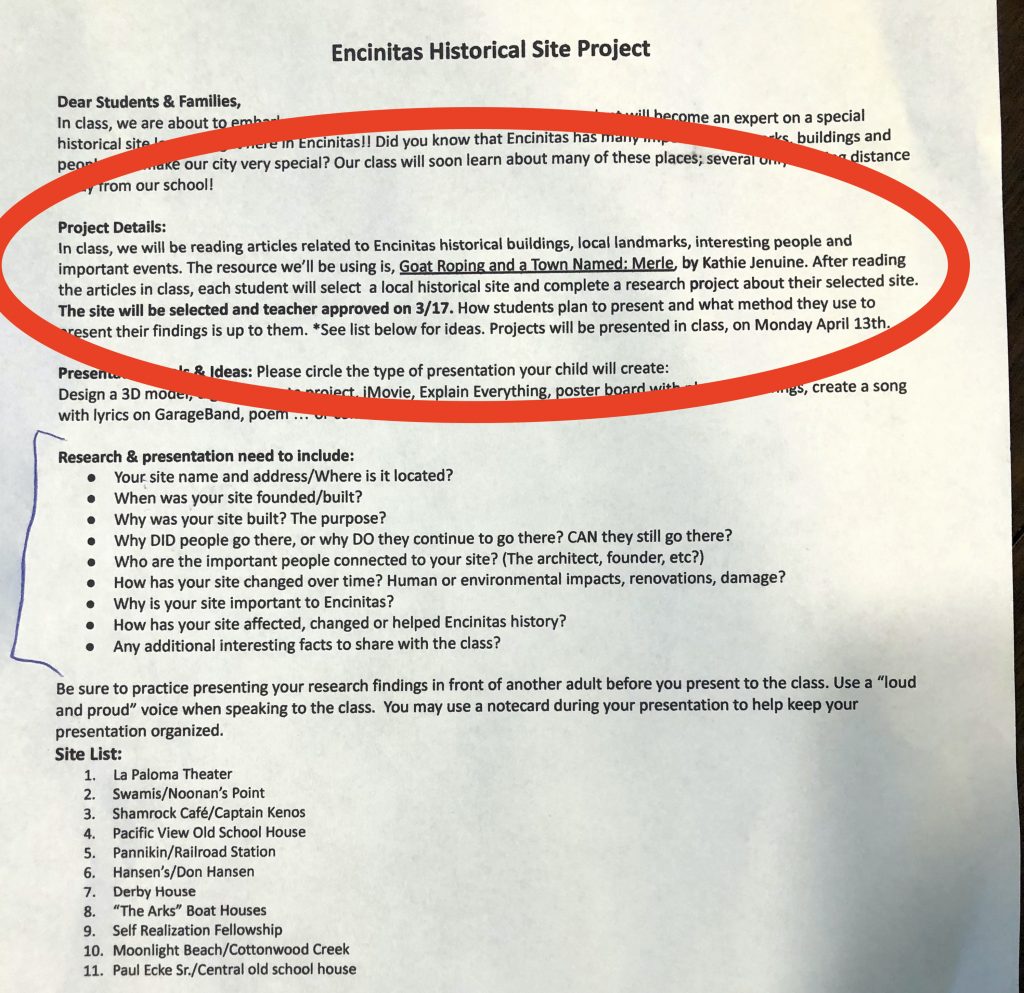
Can I vent for a second?
My adorable niece just finished presenting her ‘historical site’ project and asked if she could share it with me.
Of course I obliged.
Her project task was to research a local historical site (see above) and present it in a method of her choosing.
She chose to create a 6 slide powerpoint (as did a majority of her peers) on the local Encinitas’ ‘Arks boat house.’
Not a bad project right?
Not exactly.
- The project was certainly meaningful. Her class was learning about the important history of the area.
- The project was certainly relevant. The sites chosen were ones that told the story of a changing landscape.
But…
The project was not AUTHENTIC. My niece might have been responsible for re-telling local history, but she didn’t have to think, act, and create in the way real historians do.
She wasn’t co-curating a new exhibit in a museum, or finding new ways to honour Encinitas’ past. She was simply re-presenting existing knowledge in a new way.
This was a project, but it was not project-based. Here are three questions that would have led to deeper reflection, critical thinking, and unleashed the unbound creativity my niece possesses.
- How do historians curate historical sites? Rather than simply hand students a paper with a project task with little to no guidance, the teacher could have guided students through a real case study. As a class, they could have walked to a local site, outlined the process of how it was assembled, dug up primary source photos and documents, interviewed the curator, and used it as a context for their own independent research. Imagine the depth of research they could have conducted if this was the starting point rather than a handout.
- How can I exhibit my work to a wider, authentic audience? Imagine if instead of asking students to present to classmates, students were tasked with presenting to the Encinitas community- detailing how and why they sites need to be preserved. Students could add to the current historical site, publish articles on the virtual website, or even design a short walking tour. Their task would no longer be to simply retell information, but to build new awareness and appreciation.
- Who are some people that can enhance and strengthen my project work? While parents were tasked with supporting their children in this project, imagine if students worked alongside REAL local anthropologists, historians, museum curators, and restoration workers. Imagine if they used the sites as inspiration for their own restoration projects of history that hasn’t been told. This would be a way of using existing knowledge to build new knowledge.
Have you ran projects with students?
Are they guided by a handout like this one, or by real- world inquiry, investigation and authentic outcomes?
It took me 3 years to learn the secrets of solid project-based design.
Next month I am running a short 4 session series to help uncover those secrets, and help you design your project-based experience.
You will walk away with a project-based experience that develops more reflective, innovative, critical thinkers; while also hitting your academic standards.
You can secure one of the remaining spots below.
